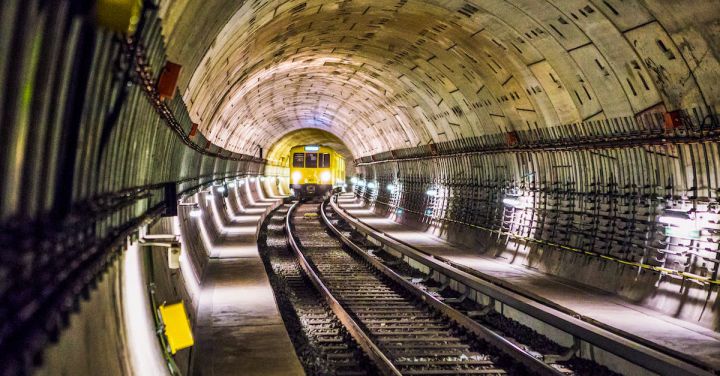Railway tunnel construction is not for the faint of heart. It is a perilous and demanding task that requires meticulous planning, precise engineering, and nerves of steel. The construction of a railway tunnel is a fascinating spectacle, filled with drama and dynamite.
One of the most crucial aspects of tunnel construction is the excavation process. It begins with the selection of the tunnel route, taking into consideration the geological conditions of the area. Once the route is determined, the excavation process begins, usually with the use of explosives. Explosives are carefully placed and detonated to blast through the rock and create a tunnel cavity.
The use of dynamite in tunnel construction is both thrilling and hazardous. The explosions send shockwaves through the rock, shattering it into pieces. The sound of the blast reverberates through the tunnel, creating an awe-inspiring spectacle. The dust and debris fill the air, creating a cloud of chaos and excitement.
The process of tunnel excavation is a delicate balance between power and precision. The engineers must carefully calculate the amount of explosives needed to blast through the rock without causing any structural damage. It is a high-stakes operation that requires expertise and experience.
As the excavation progresses, the tunnel slowly takes shape. The workers, known as tunnelers, toil relentlessly, often in harsh and dangerous conditions. They use heavy machinery, such as tunnel boring machines, to remove the debris and create a smooth tunnel surface.
Tunnel construction is not without its challenges. The tunnelers must navigate through various geological formations, such as hard rock, soft soil, and unstable ground. They encounter unexpected obstacles, such as underground water sources or caves. These challenges require quick thinking and adaptive engineering solutions.
The construction of railway tunnels is not limited to land; it also extends underwater. Underwater tunnel construction is a whole new level of complexity and danger. The tunnelers must contend with the immense pressure of the water and the constant threat of flooding. They employ innovative techniques, such as the use of watertight seals and underwater concrete, to ensure the safety and stability of the tunnel.
Safety is a paramount concern in tunnel construction. The workers must adhere to strict safety protocols to minimize the risks associated with working in such hazardous environments. Protective gear, such as hard hats and safety harnesses, are mandatory. Regular inspections and monitoring ensure that the tunnel remains structurally sound and free from any potential hazards.
The completion of a railway tunnel is a momentous occasion. It marks the triumph of human ingenuity and perseverance over nature’s formidable obstacles. The tunnel becomes a vital artery, connecting cities and regions, facilitating the movement of people and goods.
Railway tunnel construction is a true testament to human achievement. It showcases the power of engineering and the indomitable spirit of the individuals involved. It is a thrilling and dramatic process, filled with excitement and danger. The dynamite blasts, the dust-filled air, and the sound of heavy machinery create an atmosphere of intensity and anticipation.
In conclusion, railway tunnel construction is a captivating endeavor. The drama and dynamite of the process make it a spectacle to behold. The precision and power required to excavate through rock, navigate through challenging geological formations, and ensure the safety of the workers are awe-inspiring. Railway tunnels are not just feats of engineering; they are symbols of human resilience and progress.
